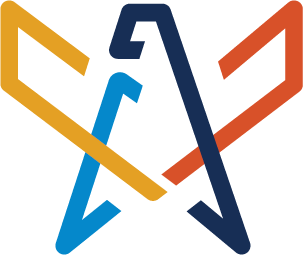Teacher Feature: March 2025
Andrea Trumbull
Advanced Academics Resource Teacher
Ravensworth Elementary School, Fairfax County Public Schools, Virginia
Andrea is a member of the ACCESS Lending Library Program!
Andrea Trumbull is a talented educator working with both students and teachers in Fairfax County Public Schools. She is skilled at bringing real-world problems to life for her students, and she creates projects that spark interest in a range of learners. We are thrilled that she has utilized AFOSR’s lending library program this past year, and we can’t wait to see what her students take on next!
You can read more about the ACCESS Lending Library in this article from the Griffiss Institute, which includes some fun insights from Andrea! She shared our Edison Robots with nearly 600 students at Ravensworth Elementary this past year. Read her interview below:
1. What does an Advanced Academics Resource Teacher do that is different from a traditional classroom teacher?
In my job I work directly with students, teachers, administrators, and families. I teach classes, smaller groups, and after school programs, which I love because there’s always variety in what we are working on: from cross-curricular projects like investigating erosion and writing a set of guidelines for building near sensitive coastlines, to analyzing a tomb painting from Ancient Egypt, to learning about coding and circuitry and applying them to other disciplines like telling an original story. I also plan with and coach teachers, facilitate professional development, and engage in outreach to families. It’s like being a teacher plus, I get to do what I love with students, and then expand that to help other teachers and families.
2. What led you to your current role at Ravensworth? Have you always been in education?
My path to becoming a teacher was one of resistance. When I was young, I could never answer the question, “What do you want to be when you grow up?” but (I thought) I knew two things: I didn’t want to be a teacher, and I never wanted to live in California, and I have done both! The California part was because I read a book in first grade about the 1906 San Francisco earthquake and it terrified me. The teacher part was because I imagined that it was a really hard job where you had to take a lot of work home with you. While I was right, I didn’t account for the reasons why it’s worth it. When I was in college, I became involved in the community service center and started volunteering at an after school program. I loved it. While throughout school I was still certain I didn’t want to be a teacher, I became more and more involved and ended up working in the after school summer program. After graduation I moved to California and became an aide for students with special needs. My roommate at the time was a teacher and suggested that I apply for an open “teaching assistant” job at his school. Eventually I realized that despite my efforts, I kept finding myself in classrooms in teaching-adjacent roles, so I finally enrolled in a teacher preparation program and it was the best decision. After getting married and moving to Virginia, I became a Full Time Advanced Academics classroom teacher, which is the gifted program in my district. I really enjoyed working on diving deeper into concepts and realized that the role of a resource teacher would allow me to bring those experiences to more students, while also advocating for teachers and families.
3. What is your favorite classroom resource that you love to share with your students? What memorable lessons or activities have you been able to carry out using this resource?
Being able to share the resources from the ACCESS Lending Library with my school has been such a great opportunity. I think my favorite so far has been the LittleBits. It has so many possibilities of what students can create while developing an understanding of circuitry. One of my groups of students worked on a challenge to move as many paper balls as they could from one square to another that was 4 feet away. It was fantastic to see students engaging in teamwork, creative problem solving, and working through the engineering design process , while also being incredibly creative. They were so proud too. Even groups that weren’t 100% successful could speak to what worked and didn’t, and how they would change their design moving forward if there was more time.
4. What is your favorite part about your job?
The aha moments. When students are having a productive struggle with a problem or concept, and it clicks. They understand something from a different perspective, or realize another possible solution and can finally push forward. Sometimes all it takes is a little guidance, and sometimes it takes longer, but fostering the ability to stick with a problem and see it through is so important, and the reason the “really hard job” where you have to “take work home with you,” is worth it.
Thank you so much, Andrea!


